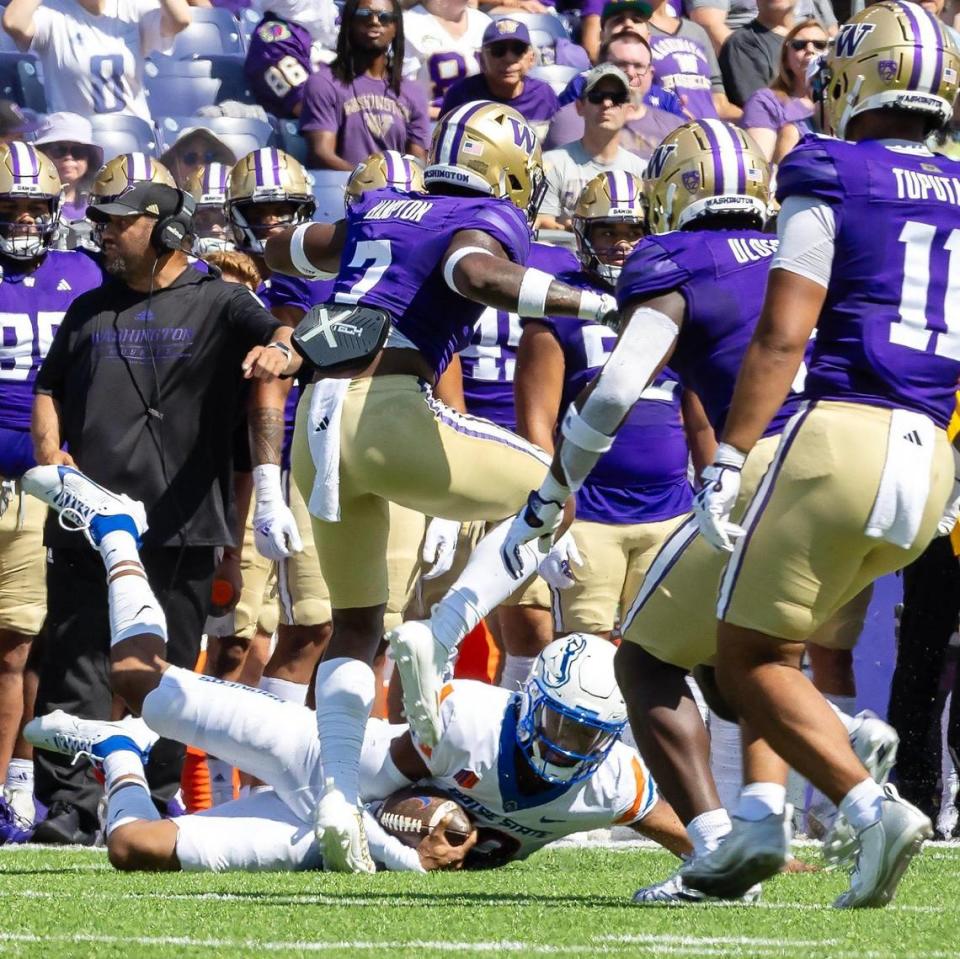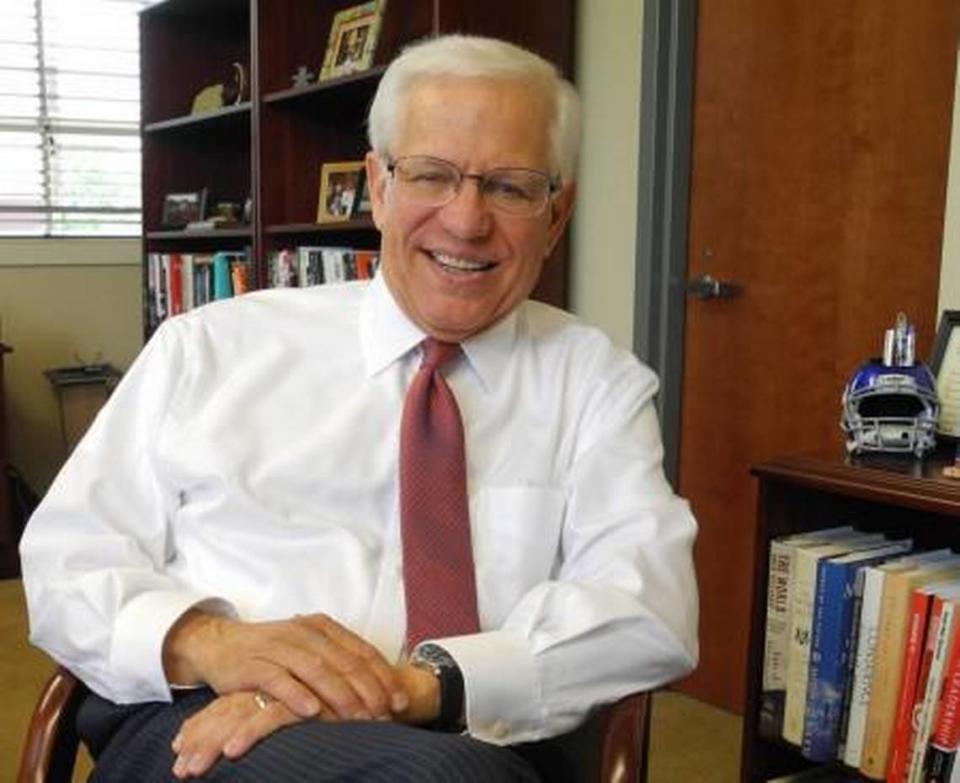Conference realignment. Transfer portals. Athletes and fans come last in this game | Opinion
- Oops!Something went wrong.Please try again later.
Years ago, the NCAA created the term “student-athlete.” By placing the term “student” before athlete, conventional wisdom holds that everyone from that moment on would know that the NCAA places the student’s academic success ahead of athletic and team obligations. But not so fast with that explanation; the original intent wasn’t quite that noble.
After the death of a Ft. Lewis College football player while competing in the 1950’s, his widow sued for workmen’s compensation death benefits and eventually lost before the Colorado Supreme Court which held that the college player was not an employee because Ft. Lewis was not in the football business. That’s when the NCAA figured it better use the term “student-athlete” to make a stronger case for players not being defined as “employees” and, therefore, avoiding liability for the university or college if a player was injured or died in competition.
Whether a student-athlete is an employee entitled to wages and benefits by the university is still up for grabs, but one thing is clear. If intercollegiate athletics were forced to classify its student-athletes as employees, it would be a game changer for college sports. No telling how radically the landscape would change, and impossible to predict the increased costs incurred by universities and their athletic departments. The issue is currently being deliberated in the courts and the National Labor Relations Board with the NCAA holding its breath that a result doesn’t’ force universities to classify student-athletes as employees.
Thanks to a settlement in another court case which was an effort to avoid classifying student-athletes as employees, student-athletes now benefit financially from their Name, Image, and Likeness (NIL). It seemed so simple at first. A jersey with the student-athlete’s name entitled him or her to some compensation. but it didn’t take long for NIL to turn that new right into endorsement deals, cash from social media mention and personal appearances.
NIL has encouraged the creation of NIL Collectives, donors who pool their contributions to offer the so-called “student-athlete” money or benefits. There are some NCAA guidelines for the collectives to follow, and some states have issued regulations on their use. But once word gets out about a NIL deal for a student-athlete, how does that not become nothing more than an auction with the best talent going for the biggest dollar?
So goes the last vestige of amateurism in college sports.
In some ways, the idea of an athlete being a student first and then an athlete was a subterfuge even before the lawsuits piled up and NIL was born. In Division 1 football, there was always talk among the coaches and in the media about who would be good enough to play on Sunday, with college football serving as the minor leagues for the NFL. As players spend more time in the weight room than the study hall, too often the coach’s only thought as to the student’s academic success was getting past the low bar of a grade point that allowed the athlete to play next week.
Just in case anyone thinks the NCAA and its board of directors — who are university presidents — rank academic progress as their priority, just consider the new policy enacted by the NCAA in 2021 that allows athletes on the football team to transfer to another university’s program without having to sit out a year, which was required by the previous NCAA policy. The old policy made sense both to stabilize the student’s academic status before returning to competition at another school and to prevent a transfer frenzy which would obviously work to the advantage of teams in the Power 5 conferences, which is exactly the case today. There had also been a 25-player limit on how many transfers a team could bring aboard, but — no surprise — the NCAA eliminated that last month.
It didn’t take long for the transfer portal to load up with players now allowed to play immediately upon transfer. New head coach Deion Sanders at Colorado brought in 46 transfers this year and removed 41 players from its roster. Arizona State added 29 transfers to its roster which means other players were denied scholarships. The free-for-all in transfers across Division 1 not only brings in new talent, but it also denies other players scholarship opportunities by removing them from the NCAA required 85-man scholarship roster. So much for all that opportunity the NCAA brags it offers students who could not otherwise afford a college education.
The extraordinary realignment and expansion of conferences recently — orchestrated to generate more TV dollars — will also play a role in hampering the academic success of student-athletes in Olympic sports such as volleyball, soccer, golf and others. The PAC 12 was blown to smithereens as huge, national conferences with no geographical boundaries rose from the realignment frenzy. Football teams hop aboard chartered jets while members of the Olympic sports travel through two or three airports to compete. Word is that the NCAA is pondering how to alleviate the disadvantage thrown in the way of Olympic sports student-athletes, but no sign of any result yet.
The last thing student-athletes need is yet another distraction from their studies. With the pressure to perform on the field or court and in the classroom, they are already challenged with mental health issues and now the prospect of sitting around airports waiting for the next flight shows the scant regard presidents have for the time management challenges “student-athletes” face.
Recent conference realignment also blows up traditional and historic rivalries that fans and alumni have enjoyed for years, making it possible for fans to travel to away games at reasonable expense. For many fans that just became a much more costly venture.
A favorite news source for higher education insiders, Inside Higher Education, quoted the former Ohio State and University of Maryland President, Britt Kirwan, upon his retirement in 2015 as claiming one of his major regrets was that college and university leaders lost control of athletics. It seems only worse today as television dollars now reign over intercollegiate athletics.
What are those piles of TV cash going to do for universities and athletic departments? Based on experience, it will used to hire more assistant coaches, hire more staff by athletic departments already top-heavy with personnel, spruce up already plush locker rooms and facilities, and who knows what else. But I doubt it will focus on eliminating the deficit many teams carry from year to year as universities subsidize their operations with student fees and direct payouts to athletics from university funds that could be spent on the academic mission. I know something about that. It happened under my watch as well.
As the NCAA and its presidents stand on the sidelines hardly uttering a peep about the consequences of conference realignment and its presidents and athletic directors grow giddy over all that TV money heading their way, court cases pile up that could force radical changes to intercollegiate athletics. Stay tuned, but don’t expect the primary concern to be for the student-athlete based on current and past behavior.
Bob Kustra served as president of Boise State University from 2003 to 2018. He is host of Readers Corner on Boise State Public Radio and is a regular columnist for the Idaho Statesman. He served two terms as Illinois lieutenant governor and 10 years as a state legislator.


